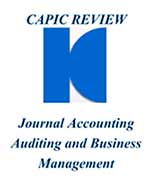Measuring refinancing risk: a methodological approach for financial statement analysis
Published 2018-12-26
Keywords
- financial analysis,
- financial statements,
- refinancing risk
How to Cite
Abstract
Refinancing obligations is a common practice among firms when long-term maturity has shortened markedly. Without the application of Asset and Liability management (ALM), firms are often forced to refinance in unfavorable market conditions, for example, facing higher interest rates. Although, ALM has been widely studied and applied for firms in the financial sector, in the non-financial sector its application has been scarce.
This article sets a methodology for risk management analysis, to be applied in the non-financial sector, which quantifies how exposed a firm could be, by only using publicly available information contained in Financial Statements.
In particular, we propose two measures: (1) the structural mismatch of the Balance Sheet, which measures how likely a firm is to refinance its obligations, and (2) the Equity at Risk (PaR due to its’ Spanish abbreviation), which captures the greatest expected loss that comes from refinancing in adverse market conditions. The referred metrics are validated accordingly thorough statistical tools.
To do this, we use a sample of 163 Chilean public firms and show that our measures explain more the likelihood of refinancing by a firm compared to an alternative proxy commonly used in the literature.
Downloads
References
2. Benjamin J., and Stanga K. (1977), Differences in disclosure needs of major users of financial statements, Journal of Accounting and Business Research volume 7, issue 27, 187-192.
3. Brunnermeier M. K., and Motohiro Y. (2009), A note on liquidity risk management, American Economic Review 99, 578–583.
4. Cabellero R., Simsek A. (2009), Complexity and Financial Panics, NBER 14.997.
5. Choi J., Hackbarth D., and Zechner J. (2017), Granularity of corporate debt, Working
paper, University of Illinois.
6. Diamond, D. W. (1991), Debt maturity and liquidity risk, Quarterly Journal of Economics 106, 709–737.
7. Diamond, D. W. (1993), Seniority and maturity of debt contracts, Journal of Financial Economics 33, 341–368.
8. Froot, K. A., Scharfstein D. S., and Stein J. C. (1993), Risk management: Coordinating corporate investment and financing policies, Journal of Finance 48, 1629–1658.
9. Harford J., Klasa S., Maxwell W. (2014), Refinancing Risk and Cash Holdings, Journal of Finance 69, 975-1012.
10. Peura S., Jokivuolle E. (2004), Simulation based stress tests of banks’ regulatory capital adequacy, Journal of Banking and Finance 28, 1801-1824.
11. Sharpe, Steven A., (1991), Credit rationing, concessionary lending, and debt maturity, Journal of Banking and Finance 15, 581–604.


































